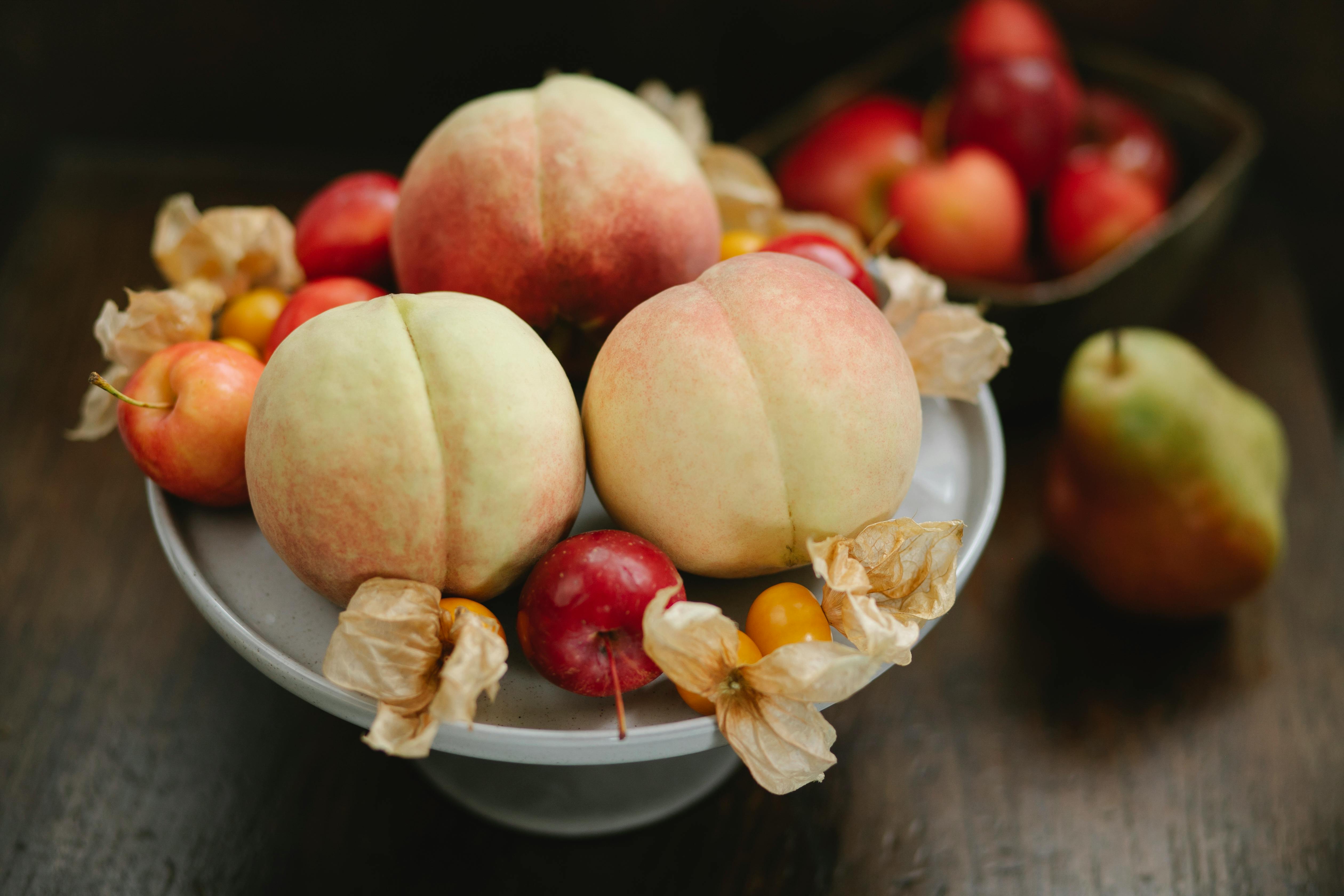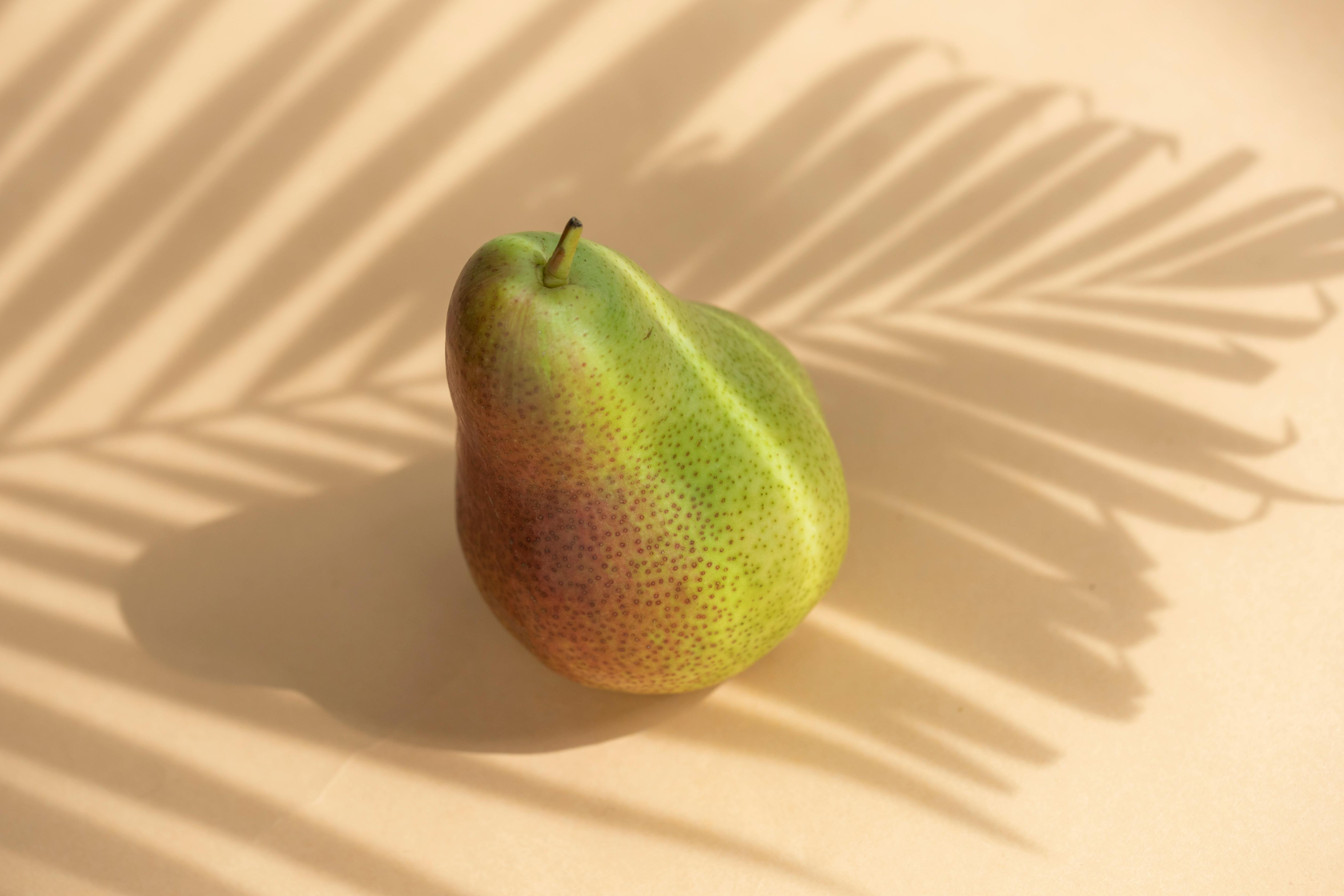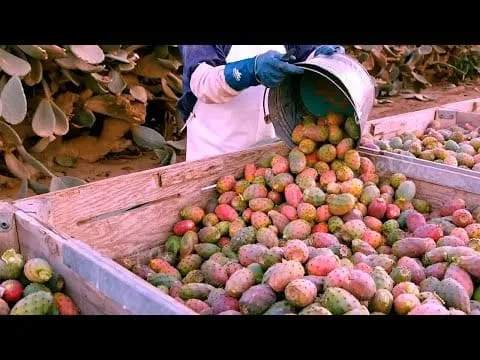Harvesting prickly pear fruit can be a rewarding experience. Prickly pear fruits are both delicious and abundant in many areas, making them a great choice for harvesting. In this article, we’ll discuss the best ways to harvest prickly pear fruit safely and efficiently. We’ll cover the best time of year to harvest, the tools you’ll need, and how to prepare the prickly pears for eating. Finally, we’ll share some tips on how to maximize your harvest and get the most out of your efforts. Read on to learn more about harvesting prickly pear fruit!Prickly pear fruit is a type of cactus fruit that grows on the nopales cactus plant. It is round or oval in shape and typically measures between 2.5 to 10 cm in diameter. The exterior of the fruit is covered in small, needle-like spines while the inside contains juicy, edible flesh with small seeds. Prickly pear fruits are typically yellow, orange, or red in color and can be eaten fresh or used to make jams, jellies, and juices.
How to Identify Prickly Pear Fruit
Prickly pears are a type of cactus fruit that come in a variety of shapes, sizes, and colors. Knowing how to identify them can help you find the best tasting varieties. Here are some tips for identifying prickly pear fruit:
The most obvious way to identify a prickly pear is by looking for the small, spiny thorns that cover the outer skin of the fruit. These spines can range in color from white to yellow or brown, and can be quite sharp. The skin of the fruit also varies in color, but it typically ranges from yellow to orange or even purple.
Another way to identify a prickly pear is by looking at its shape. Most prickly pears have an oval shape with slightly curved edges. They also tend to be quite small, usually no bigger than your palm.
When it comes time to taste the fruit, you’ll want to make sure that it’s ripe enough. A ripe prickly pear should be slightly soft when you press your fingers against it and have a sweet scent. If it’s too firm or has an off smell, then it’s not ready yet.
Finally, if you’re unsure whether or not a fruit is a prickly pear, look for its flower buds. Prickly pears typically have bright yellow flowers that bloom in late summer and early fall. These flowers are often used as decoration in Mexican dishes.
By following these tips, you should be able to easily identify prickly pear fruit and enjoy its sweet taste!
Preparing for Harvesting Prickly Pear Fruit
Harvesting prickly pear fruit is a rewarding experience, but it requires some preparation beforehand. Knowing how to properly prepare for harvesting prickly pear fruit can save you time and energy in the long run. The following tips will help ensure a successful harvest of prickly pear fruit.
First and foremost, it is important to select an area with plenty of prickly pear fruits that are ripe and ready for harvest. Prickly pears can be found in many areas, but make sure to check with local farmers or gardeners to find out where the most abundant patches are located. Once you have identified an area full of ripe prickly pears, it’s time to start preparing.
Before harvesting any fruit, it is important to wear protective clothing such as long pants, long sleeves, gloves, and eye protection. This helps protect you from the spines on the cactus pads that can cause injury if not properly protected from. It is also important to use tools such as shears or pruning shears when harvesting the prickly pears in order to avoid injuring yourself or damaging the cactus pads.
It is also important to plan your harvest ahead of time and determine how much fruit you would like to collect. This will help you know when it’s time to stop harvesting so that you don’t end up with too much or too little fruit. Once your harvest is complete and all of your protective gear has been removed, it’s time to enjoy the fruits of your labor!
Picking Prickly Pear Fruit
Picking prickly pear fruit can be a tricky and labor-intensive task. The fruit is covered with small, sharp spines that can easily puncture the skin if one isn’t careful. It’s best to wear long sleeves and gloves when picking prickly pears to protect your hands. The ripe fruit is usually found in clusters along the cactus stems and pads. To pick the fruit, it helps to use a pair of tongs or pliers so you don’t have to touch it directly. Once the prickly pears are picked, they should be washed and their spines removed before they are consumed.
Collecting Prickly Pear Fruit
Collecting prickly pear fruit is much easier than picking it, since most of the spines have already come off during the ripening process. To collect the ripe fruit, simply hold a container beneath the cactus stem or pad and shake it gently. The ripe fruits should then fall into the container with minimal effort. The collected prickly pears should then be washed before consuming or cooking. If some of the fruits still have spines on them, they can be removed using tweezers or a knife before washing them off.
Harvesting Prickly Pear Fruit
Harvesting prickly pear fruit requires some special care and preparation. Prickly pear cacti have long spines that can cause injury if handled incorrectly. To ensure a safe harvest of prickly pear fruit, follow these tips:
Wear Protective Gear
When harvesting prickly pear fruit, it is important to wear protective gear such as gloves and long pants. This will help to protect your hands and arms from the sharp spines of the cactus. It is also advisable to wear eye protection to prevent the spines from getting into your eyes.
Use the Right Tools
Using the right tools for harvesting prickly pear fruit is essential. A pair of gardening shears or scissors can be used to cut the fruit off of the cactus without damaging it. It is best to use a tool with a curved blade so that you can cut around the spine without cutting into it.
Cut Low on the Cactus
When harvesting prickly pear fruit, it is important to cut low on the cactus so that you do not damage any of its branches or leaves. Cut as close to the base of the fruit as possible without injuring any part of the plant.
Remove Spines Carefully
Once you have harvested your prickly pear fruit, it is important to remove all of its spines carefully. You can do this by using a small brush or tweezers to carefully remove each spine individually. Make sure all of them are removed before consuming or handling the fruit.
Enjoy Your Prickly Pear Fruit!
Harvesting prickly pear fruit can be an enjoyable experience if done properly and safely. By following these tips, you can make sure that you have a safe harvest and can enjoy all of the delicious fruits that they offer!

Cleaning Prickly Pear Fruit
Cleaning prickly pear fruit is essential to ensure its safety for consumption. Before cleaning, you should always make sure to wear gloves and long sleeves to protect yourself from the spines of the fruit. You can then use a brush or cloth to gently rub away any dirt or debris that is on the outside of the fruit. Once you have done this, you can use a vegetable peeler or paring knife to remove the skin from the fruit. Make sure to peel away any spines that may be present as they can be hazardous if ingested. Finally, rinse off the fruit with cold water and dry it off with a paper towel before consuming or storing it.
Storing Prickly Pear Fruit
Once you have cleaned your prickly pear fruit, it’s important to store it properly in order to maintain its quality and freshness. The best way to store prickly pear fruit is in an airtight container at room temperature for up to five days. If you plan on storing them for longer than five days, you can put them in a refrigerator for up to two weeks. Additionally, if you want your prickly pear fruit to last longer than two weeks, you can freeze them in an airtight container for up to six months. Just make sure that when freezing the fruit, you remove as much air as possible from the container in order to prevent freezer burn.
What is Prickly Pear Fruit?
Prickly pear fruit, also known as cactus fruit, is a sweet and tangy fruit that comes from the Opuntia cactus plant. The plant is native to Mexico and Central and South America, but it can now be found in many other parts of the world. Prickly pears are typically oval or round in shape and range in color from dark red to yellow. They have a tough outer skin that needs to be peeled before eating, and they contain small edible seeds. The flavor of the prickly pear fruit is a unique combination of sweet and tart.
Nutritional Benefits of Prickly Pear Fruit
Prickly pear fruit is an excellent source of vitamins and minerals, including Vitamin C, beta-carotene, iron, magnesium, potassium and calcium. It also contains dietary fiber which helps to improve digestion. Additionally, prickly pear fruit has been used traditionally for its medicinal properties due to its high levels of antioxidants which can help fight inflammation.
Using Prickly Pear Fruit in Cooking
Prickly pear fruit can be used in a variety of dishes such as salads, smoothies, juices and jams. It can also be used as an ingredient in baked goods or as a topping for ice cream or yogurt. Some people even use it to make wine! The easiest way to prepare prickly pears for cooking is to cut them open lengthwise and remove the inner flesh with a spoon or knife. The flesh can then be pureed or diced into small pieces depending on the recipe you are making. When cooking with prickly pears it’s important to note that the flavor will become more intense as it cooks so you may want to reduce the amount of other ingredients accordingly.
Making Products with Prickly Pear Fruit
Prickly pear fruit is a versatile and delicious ingredient that can be used to make a variety of products. From jams and jellies to syrups and smoothies, prickly pear fruit can add a unique flavor to any dish. The fruit is also high in antioxidants, vitamins, and minerals, making it a nutritious addition to your diet. This article will provide an overview of the different products you can make with prickly pear fruit and how to do so.
To make jams or jellies from prickly pear fruit, you’ll need to first remove the spines from the skin of the fruit. Once this is done, you can cut the fruit into small pieces and boil them in water until they are soft. You’ll then need to strain out the liquid from the boiled pieces of fruit and add sugar and pectin to create a thick jam or jelly consistency. Once this is done, you can store your finished product in an airtight container in the refrigerator for up to two weeks.
Smoothies are another great way to use prickly pear fruit in your diet. Start by cutting the spines off of the skin of your prickly pear fruits before blending them with other healthy ingredients like yogurt or almond milk. You can add additional flavorings like honey or cinnamon for an extra special touch. Just be sure not to over-blend your smoothie as this will cause it to become watery and unpalatable.
Prickly pears also make delicious syrups which can be used on top of desserts or even pancakes! To make your syrup, start by boiling some prickly pears until they become soft before straining out their juice into a separate bowl. You’ll then need to add sugar and lemon juice before simmering it on low heat until it turns into a thick syrup consistency. Once this is done, you can store your syrup in an airtight container for up to two weeks in the refrigerator.
Finally, if you’re looking for a unique cocktail ingredient, prickly pear fruits also make great margaritas! Start by combining some tequila with freshly squeezed lime juice before adding some pureed prickly pears for sweetness and flavor. You can add additional ingredients like agave nectar or orange liqueur for an extra special touch before garnishing with fresh lime slices and serving over ice cubes!
Making products with prickly pear fruits doesn’t have to be difficult – all you need is a little creativity and some imagination! With these tips, you’ll be sure to find plenty of uses for these tasty fruits that will leave everyone wanting more!

Conclusion
Harvesting prickly pear fruit can be a rewarding experience. Not only are they full of nutrients, but they also have an interesting flavor that can add a unique twist to any meal. As long as you are careful when harvesting them, there is no reason why you cannot enjoy this delicious fruit. By following the steps outlined in this article, you should be able to successfully harvest a prickly pear crop.
Remember to always wear protective clothing and gloves when harvesting prickly pears, and keep an eye out for any signs of rot or mold on the fruit. If you maintain proper harvesting techniques, you should have no problem collecting a large crop of tasty prickly pears each year!



